6 Types of Chinese Characters Every Chinese Learner Should Know
December 23, 2021
For anyone learning the Chinese language, it would be easy to be intimidated by Chinese characters. Fret not! In truth, it’s in learning what makes up a character, and how you classify it, that gets you a much richer and deeper understanding of it, the language, and the culture as a whole.
One facet of this deeper understanding comes from learning how Chinese characters are classified. Let’s take a look at what Chinese characters are and how many classifications of Chinese characters there are before exploring each type of the Chinese characters, and what learning this can do for folks hoping to decode this incredible language.
What are Chinese characters?
How many types of Chinese characters are there?
Pictographic Chinese characters
Chinese ideograms
Picto-phonetic Chinese characters)
Huìyìzì 会意字 or associative compounds
Chinese loan characters
Chinese transfer characters
Why should I learn the different types of Chinese characters?
What are Chinese characters?
Chinese characters, or wénzì 文字, are the written language for Chinese. These are what seem most unfamiliar to those learning the language. Unlike pīnyīn 拼音, or the romanization of the Chinese language, Chinese characters will likely look far different than most other languages.
Interestingly, these characters have evolved over thousands of years. In its origin, much of the written language was based in pictographs. From there, Chinese characters evolved into what we see today. As we will see, some of those pictographs have evolved into a more modern form. However, the vast majority of Chinese characters are actually something else: logograms.
Luckily for us, there is a logic to this written language that will help any Chinese language learner as they dive into Chinese characters.
This is where Chinese character classification comes in.
How many types of Chinese characters are there?
There are six main classifications for Chinese characters. We can trace the origins of these classifications back to texts written thousands of years ago. One of the primary documents discussing these classifications was the Shuōwén Jiězì 说文解字 (“Explaining Graphs and Analyzing Characters”). The Shuōwén Jiězì is an ancient Chinese dictionary, dating back to the Han Dynasty (25-220 C.E.).
First, there’s wén 文 (character, language). When it comes to Chinese characters, some are made up of a single element, like shān 山 (mountain), or wén 文 itself.
Then there’s zì 字 (word, character). Often, these are characters that are made up of two or more elements, like hǎo 好 or zì 字.
Together, wénzì 文字 means “Chinese characters”.
“Shuōwén 说文” includes the character “shuō 说 (to explain)” - the book explains the “wén 文”.
In jiězì 解字, “jiě 解” means “to analyze” – the book analyzes the “zì 字”.
While it was not the first comprehensive Chinese dictionary, the Shuōwén Jiězì was the first text to analyze character structure in a thorough way. It was written by Xǔ Shèn, a Chinese philologist, calligrapher, politician, and writer. One of Xǔ Shèn’s aims in writing the Shuōwén Jiězì was to help decode the meaning of ancient texts. In doing so, those documents could then be used by the government to bring more order and solidify their rule.
In observing the tracks left behind by birds in the snow, Cāng Jié had the idea to create pictures to represent the animal that left them. This expanded to the development of the pictographs that eventually made up the first set of Chinese characters.
Despite these clear political motives, it was politics that actually delayed the presentation of the Shuōwén Jiězì to the emperor after it was completed.
While the document was finished by 100 C.E., the imperial attitude toward scholarship and literature was quite unwelcoming. Therefore, Xǔ Shèn waited until 121 C.E., asking his son to submit the manuscript to the new emperor.
Whatever Xǔ Shèn’s original aims, the Shuōwén Jiězì did a lot to organize and analyze Chinese characters. In fact, he helped to create what we know today as bùshǒu 部首 (radicals).
There are six principles within the Shuōwén Jiězì to classify characters, otherwise known as the liùshū 六书. Let’s take a closer look at the six Chinese character classifications.
No. 1 | Xiàngxíng 象形 (pictographic character)
These pictograms are essentially stylized drawings of objects they represent. There are around 600 Chinese characters that fall under this classification. Many of the ancient characters are classified as xiàngxíng characters.
For example:
rì 日 (sun)
yuè 月 (moon)
shuǐ 水 (water)
yǔ 雨 (rain)
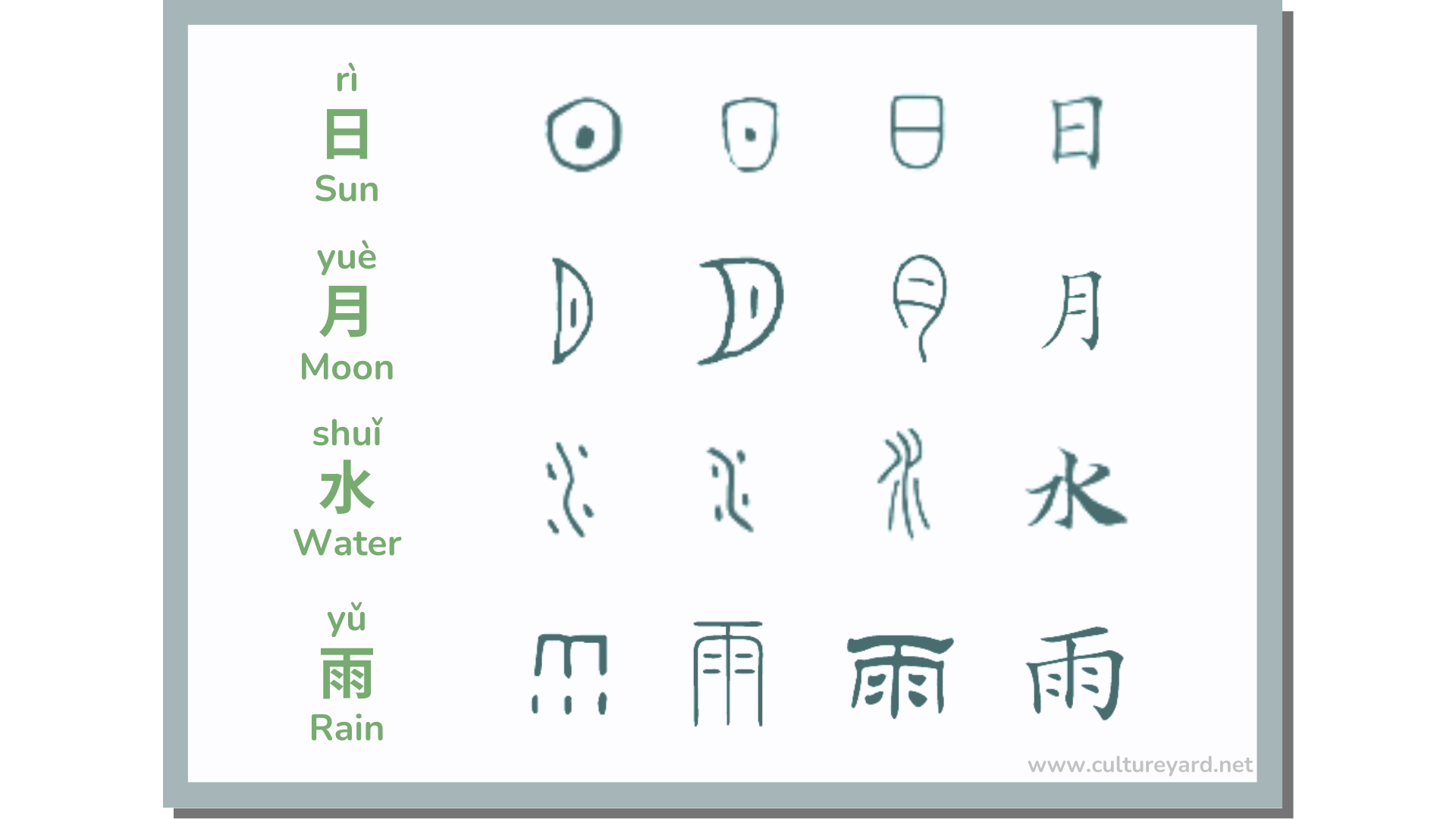
No. 2 | Zhǐshìzì 指事字 (ideogram)
Also known as “self-explanatory characters”, these ideograms are characters that are intended to symbolize abstract ideas.
For example:
shàng 上 (upper, higher, on)
xià 下 (below, down)
yī 一 (one)
běn 本 (root)
No. 3 | Xíngshēngzì 形声字 (picto-phonetic characters)
Also known as phonograms, phonetic compounds, or determinative-phonetic characters, this is the classification in which the vast majority characters fall. These characters combine both a semantic and phonetic element. Essentially this means there is one component of the character that indicates its meaning, while the other component indicates the sound.
For example:
jī 基 (foundation) —>
tǔ 土 (earth) - semantic element
qí 其 (his, her, its) - phonetic element
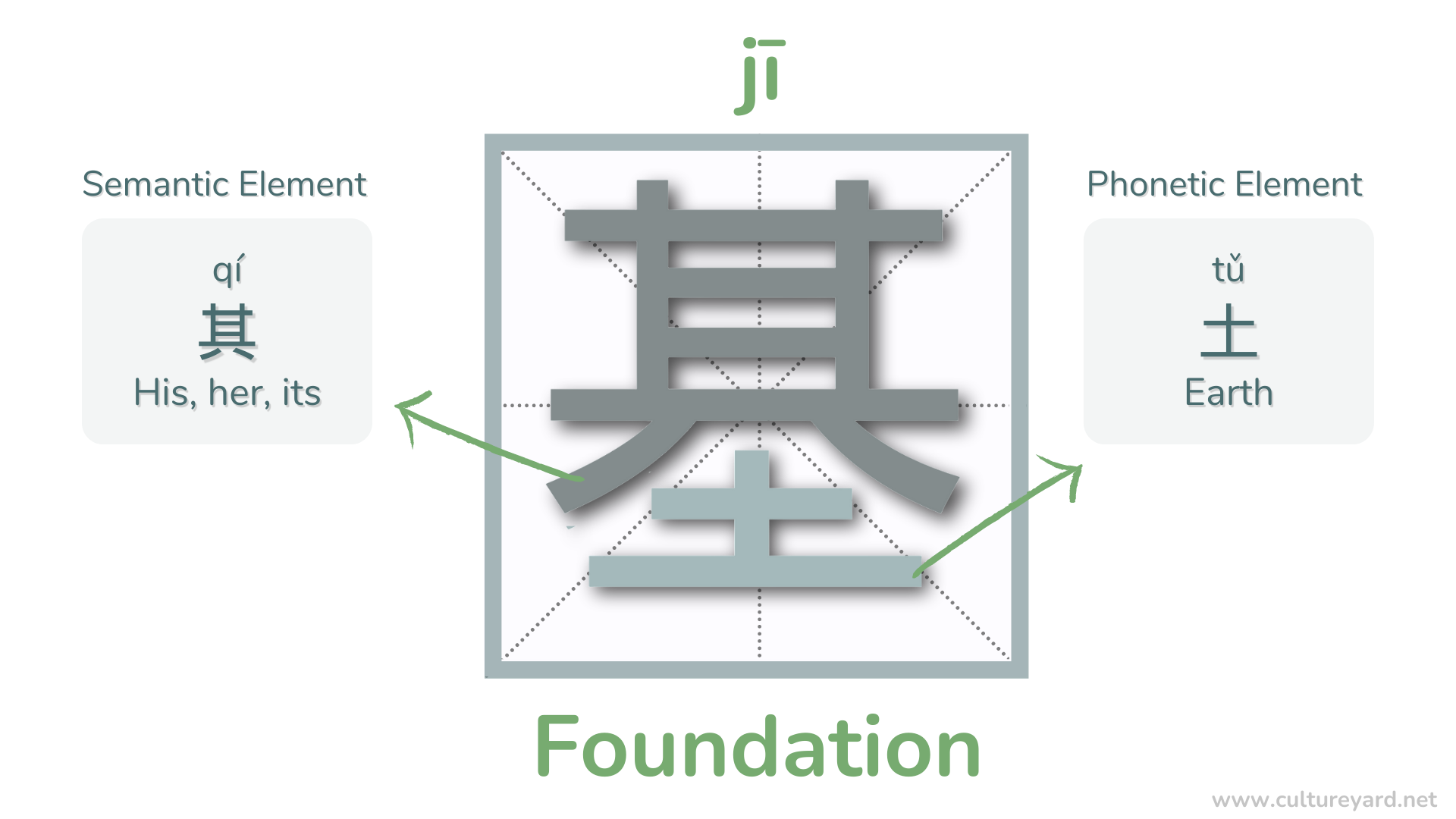 pāi 拍 (to clap, beat) —>
pāi 拍 (to clap, beat) —>
shǒu 手 (hand) - semantic element
bái 白 (white) - phonetic element
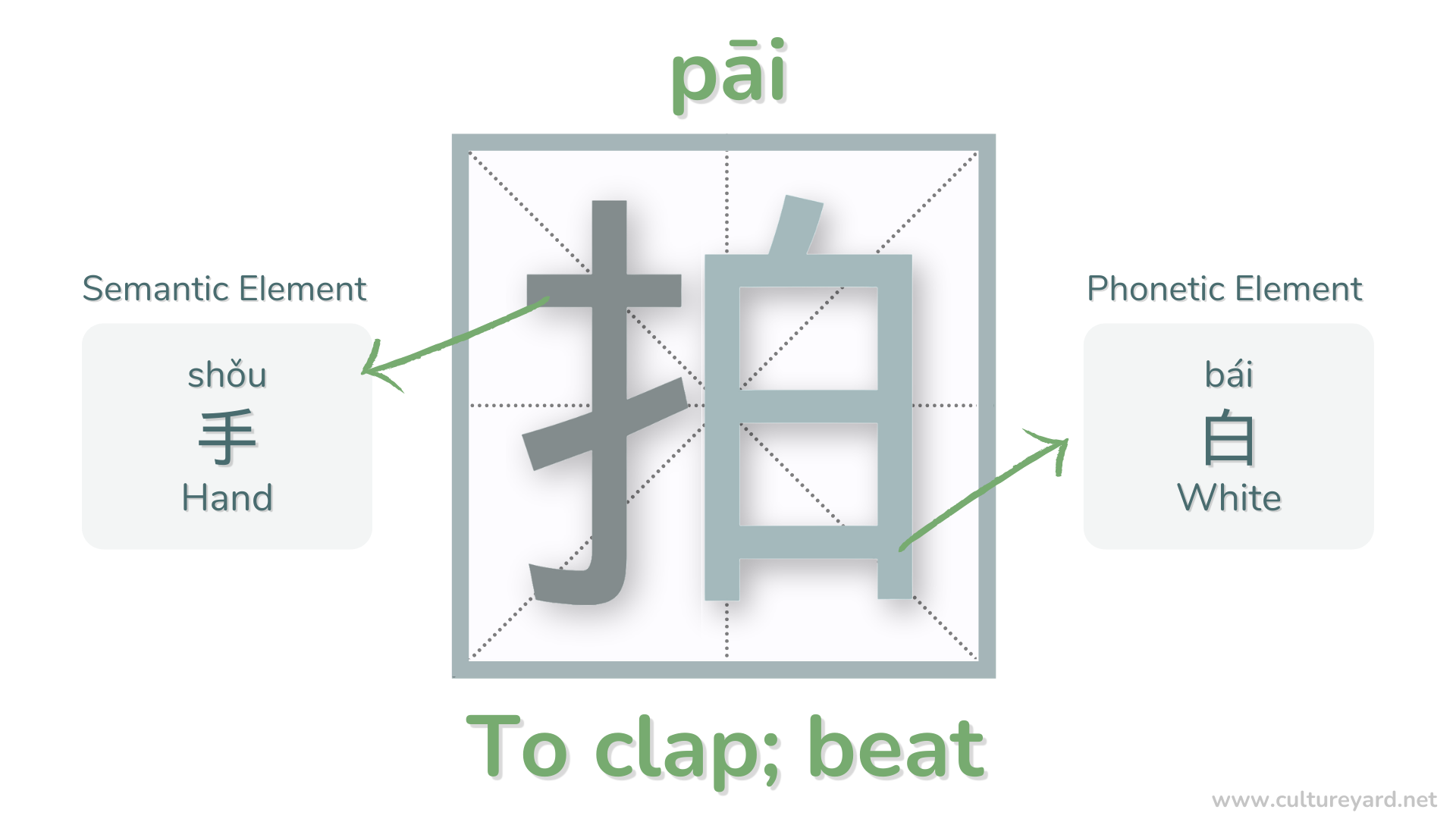 gōng 功 (achievement) —>
gōng 功 (achievement) —>
lì 力 (power, ability) - semantic element
gōng 工 (worker; to work) - phonetic element
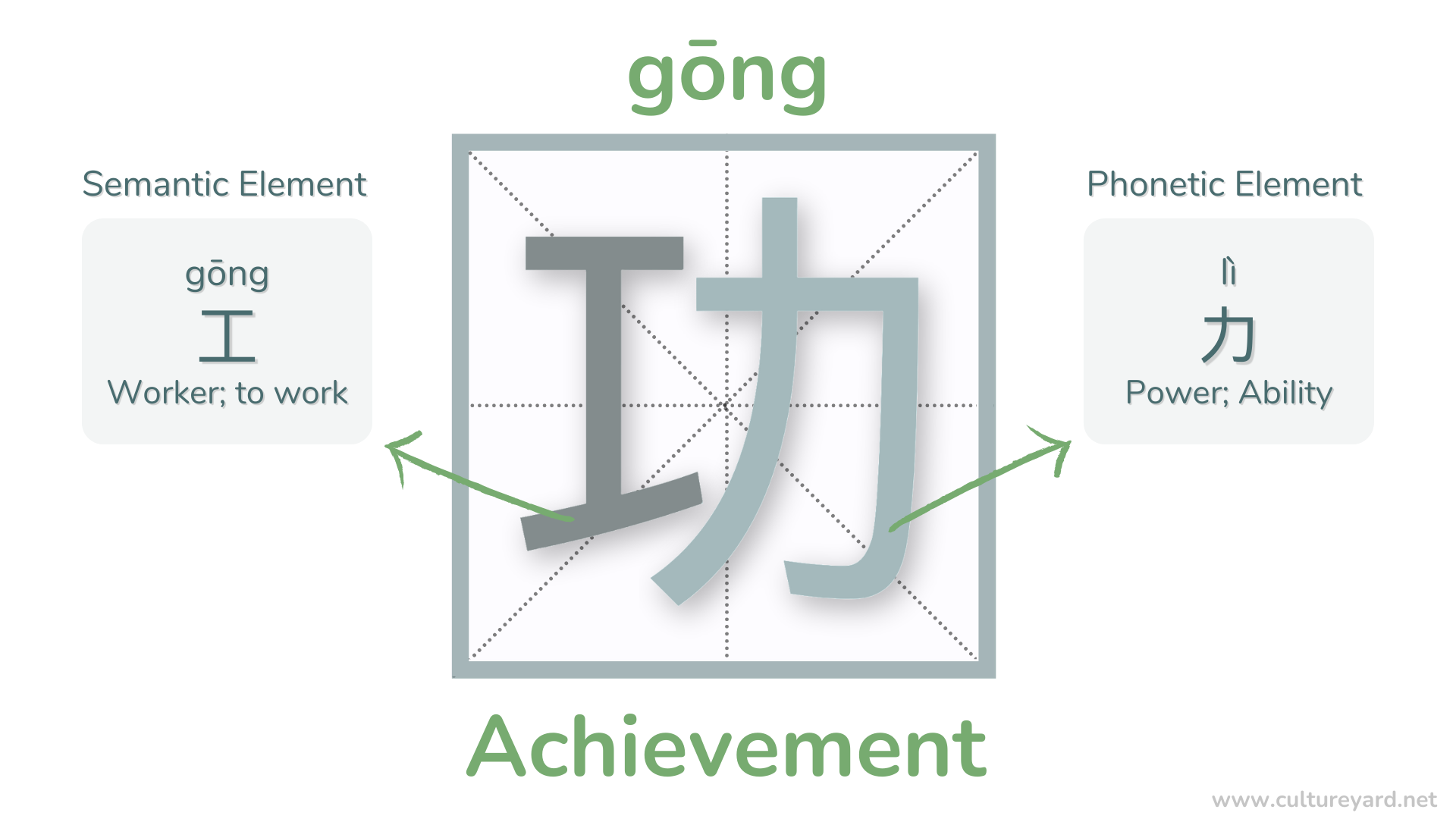
No. 4 | Huìyìzì 会意字 (associative compounds)
Also known as joint ideograms, compound indicatives, logical aggregates, or combined ideograms, these characters combine two elements that work together to create the intended meaning.
For example:
lín 林 (forest) —> multiple mù 木 (tree) elements working together
xiū 休 (to stop, rest) —> a man, rén 人, resting under a tree, mù 木
kàn 看 (to see) —> a hand, shǒu 手, over an eye, mù 目
míng 明 (brightness) —> a sun, rì 日, and a moon, yuè 月, shining together

- Fun fact: many of the characters Xǔ Shèn initially classified this way were deemed incorrect and were later re-classified.
No. 5 | Jiǎjièzì 假借字 (loan characters)
Also known as phonetic loans, these are characters that have been borrowed from (or mistaken for) other characters over the years.
Think of it this way: many years ago, the word lái 莱 was used for a type of plant. Years later, the word lái meaning “to come” became common. So rather than create a character for the abstract term “to come”, folks simply amended the original character 莱 to 来, as it had the same pronunciation. Often the original character adopted the new meaning, and new characters were created for the original meanings of the loan characters.
For example:
sì 四 (four) The initial meaning was “nostril”. Now, the word for “nasal mucus” uses the character 泗.
běi 北 (north) Initially, this character meant “back (of the body)”, which is now written as bèi 背.
yào 要 (to want; to ask for) The initial meaning for this character was “waist”, which is now written as yāo 腰 (waist, small of the back).
No. 6 | Zhuǎnzhùzì 转注字 (transfer character)
Also known as “mutually-explanatory characters”, this is the classification that holds the fewest characters and is also the trickiest to grasp.
Essentially, characters with the same etymological root or similar radicals will create two separate words. Think of it as modifying or distorting a character to form a new one. Interestingly, these characters were often interchangeable centuries ago, but now hold different semantic meanings.
For example:
bà 爸 (as in bàba 爸爸) vs. fù 父 (as in fùqin 父亲) - Both characters mean dad, or father, and both have similar radicals.
kǎo 考 (examination) vs. lǎo 老 (old, aged) - While the definitions here are different, they hold similar pronunciations and possibly similar etymological roots. In fact, Xǔ Shèn specifically noted these characters under this classification.
So why should I learn the different types of Chinese characters?
While Chinese character classifications may seem useless to your studies at first glance, they are certainly worth learning. Here’s why:
Learning these classifications may help you memorize the characters more easily.
It’s true! Take shān 山 for example. If you know this character is a pictogram, it will be easier to remember its meaning by seeing what it looks like - a mountain! If you encounter sēnlín 森林, and you know it’s considered an associative compound, you’ll note that there are multiple mù 木 components and be able to derive the meaning - “forest” - more easily.

This is especially true for picto-phonetic characters. If you know a character falls under this classification, you’ll know to look for multiple elements. From there, you may be able to identify the semantic and phonetic elements without a dictionary!
These classifications help you better understand the culture behind the characters.
When studying a new language, you’re bound to learn not only grammar rules and sentence structures, but also lessons on the culture that created the language itself!
As you saw, each of these classifications have roots in the origins of written Chinese. As you parse characters and learn how to classify them, you’ll also gain insight into the history and culture that gave rise to the Chinese language we use now.
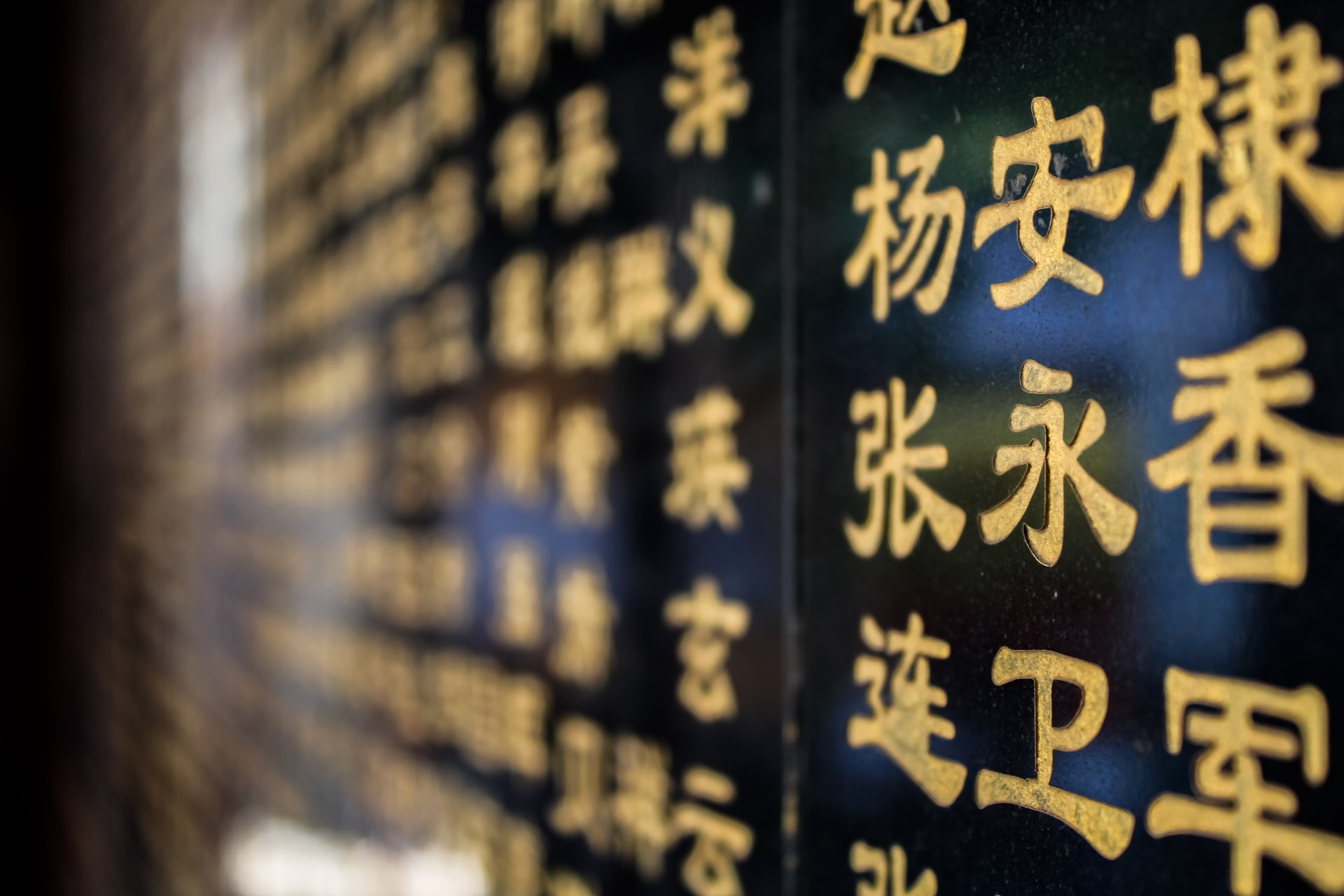
When it comes to studying Chinese characters, the more in-depth and comprehensive your effort, the more profound your overall understanding will be. Just as learning to write Chinese characters brings the characters to life, so too does learning how to classify them.
We wish you luck as you dive into these classifications in your own studies!
Post contributed by Alexandra Sieh